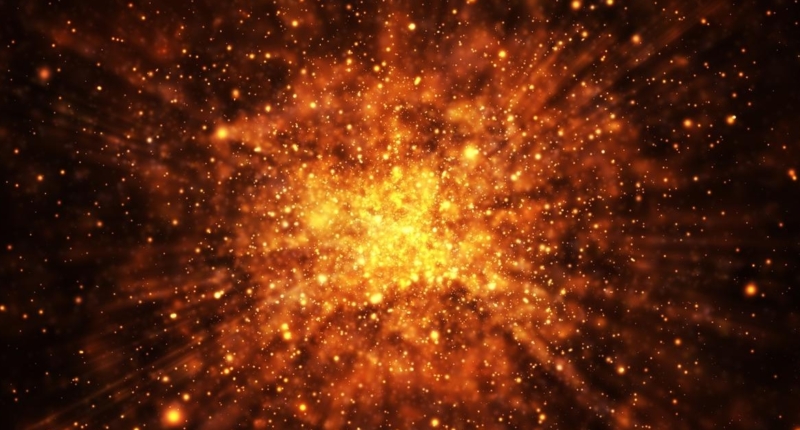Scientists have recently analyzed the waves from the brightest Gamma Ray Burst (GRB) that hit Earth in October 2022. A GRB occurs when one of two powerful jets that rush outward from a collapsing star almost directly point towards Earth. The waves, traveling for about 1.9 billion years, hit Earth and triggered sensors across the world. Despite the burst’s brightness, scientists are unsure whether a supernova occurred. The burst was so bright that it effectively blinded most gamma-ray instruments in space, making it challenging to directly record the real intensity of the emission. Additional observations from the Webb and Hubble telescopes are planned in the coming months to identify whether a supernova occurred. Astronomers expect to find a brightening supernova a few weeks later in this type of GRB.
The Brightest Gamma Ray Burst Ever Detected By Scientists
In October 2022, waves from one of the universe’s largest explosions swept through our Solar System, hitting Earth and triggering sensors across the world. Scientists have now analyzed the waves and revealed that it was the brightest Gamma Ray Burst (GRB) to occur since human civilization began.
What is a Gamma Ray Burst?
When a star, much more massive than the Sun, runs out of fuel, its core suddenly collapses and forms a black hole. As matter swirls towards the black hole, some of it escapes in the form of two powerful jets that rush outward at almost the speed of light in opposite directions. Astronomers only detect a GRB when one of these jets happens to point almost directly towards Earth.
When GRB hit Earth
GRB 221009A blinded most gamma-ray instruments in space due to their high intensity, forcing scientists to reconstruct this information from the data captured by the Fermi Gamma-ray Space Telescope. They then compared the results with those from the Russian team working on the Konus instrument on NASA’s Wind spacecraft.
The waves now termed BOAT – the brightest of all time – had been traveling for about 1.9 billion years before they reached Earth, making it among the closest-known “long” GRBs. Astronomers believe that the burst was the result of the birth of a black hole as a star collapsed.
The burst triggered detectors on numerous spacecraft, and observatories around the globe followed up on the event on October 22, 2022. NASA reported that the burst was so bright it effectively blinded most gamma-ray instruments in space, which means they could not directly record the real intensity of the emission.
Scientists have analyzed the waves and revealed that it was the brightest Gamma Ray Burst (GRB) to occur since human civilization began.
With this type of GRB, astronomers expect to find a brightening supernova a few weeks later, but so far it has proven difficult.
Scientists Unsure About Supernova in Brightest Gamma Ray Burst
Despite the brightness of the Gamma Ray Burst (GRB) that hit Earth in October 2022, scientists are unsure whether a supernova occurred. Andrew Levan, a professor of astrophysics, stated, “We cannot say conclusively that there is a supernova, which is surprising given the burst’s brightness. If it’s there, it’s very faint. We plan to keep looking. But it’s possible the entire star collapsed straight into the black hole instead of exploding.” Additional observations from the Webb and Hubble telescopes are planned in the coming months.
Also Read | Moon holding billions of tons of water that could be extracted
Don’t miss interesting posts on Famousbio

